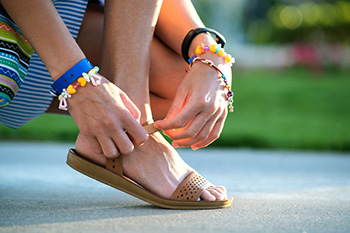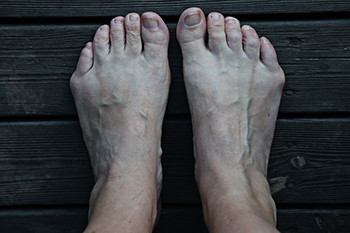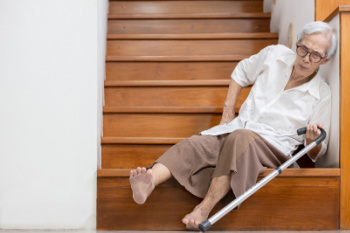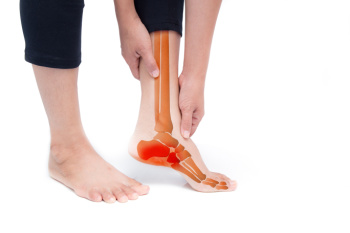Items filtered by date: July 2024
Types of Sandals That Harm Your Feet

Sandals are a go-to choice for many, especially during the summer, but they can often do more harm than good to your feet. Many sandals lack the necessary support and cushioning, leading to various foot ailments. Flat flip-flops and thin-soled sandals, for instance, provide minimal arch support, which can strain the plantar fascia and cause heel pain. Thong sandals require a gripping action that can lead to toe deformities like hammertoes. Slide sandals, often non-adjustable, can cause blisters and foot fatigue due to their instability. Flat gladiator sandals may look great but typically offer poor arch support and can create painful pressure points. Soleless or minimalist sandals, with little to no cushioning, increase the impact on your feet and joints, leading to fatigue and potential injuries. Sandals with inadequate strapping can cause friction, resulting in blisters and calluses. These types of sandals not only cause immediate discomfort but can also contribute to more serious conditions like bunions and Morton’s neuroma. If you have foot pain after wearing sandals, it is suggested that you make an appointment with a podiatrist for an exam and treatment options.
Everyday foot care is very important to prevent infection and other foot ailments. If you need your feet checked, contact one of our podiatrists from Apple Podiatry Group. Our doctors can provide the care you need to keep you pain-free and on your feet.
Everyday Foot Care
Often, people take care of their bodies, face and hair more so than they do for their feet. But the feet are a very important aspect of our bodies, and one that we should pay more attention to. Without our feet, we would not be able to perform most daily tasks.
It is best to check your feet regularly to make sure there are no new bruises or cuts that you may not have noticed before. For dry feet, moisturizer can easily be a remedy and can be applied as often as necessary to the affected areas. Wearing shoes that fit well can also help you maintain good foot health, as well as making it easier to walk and do daily activities without the stress or pain of ill-fitting shoes, high heels, or even flip flops. Wearing clean socks with closed shoes is important to ensure that sweat and bacteria do not accumulate within the shoe. Clean socks help to prevent Athlete’s foot, fungi problems, bad odors, and can absorb sweat.
If you have any questions please feel free to contact our offices located in Arlington Fort Worth, And Flower Mound, TX . We offer the newest diagnostic and treatment technologies for all your foot and ankle needs.
Stretching Can Help With Chronic Heel Pain
 Heel pain, often caused by plantar fasciitis, is a common condition characterized by inflammation of the plantar fascia, a thick band of tissue running along the bottom of the foot. This condition typically results from overuse, wearing poor footwear, or excessive standing and walking, leading to micro-tears in the fascia that cause pain and stiffness, especially in the morning. Treatment for plantar fasciitis usually involves rest, anti-inflammatory medications, and wearing supportive footwear. However, incorporating regular stretching into the treatment regimen can significantly alleviate chronic cases. Stretching exercises target the plantar fascia, Achilles tendon, and calf muscles, helping to increase flexibility, reduce tension, and promote healing. Techniques such as calf stretches, towel stretches, and plantar fascia-specific stretches can be particularly effective in managing symptoms and preventing recurrence. If you have persistent or severe heel pain, it is suggested that you consult a podiatrist, who can provide specialized care and further treatment options.
Heel pain, often caused by plantar fasciitis, is a common condition characterized by inflammation of the plantar fascia, a thick band of tissue running along the bottom of the foot. This condition typically results from overuse, wearing poor footwear, or excessive standing and walking, leading to micro-tears in the fascia that cause pain and stiffness, especially in the morning. Treatment for plantar fasciitis usually involves rest, anti-inflammatory medications, and wearing supportive footwear. However, incorporating regular stretching into the treatment regimen can significantly alleviate chronic cases. Stretching exercises target the plantar fascia, Achilles tendon, and calf muscles, helping to increase flexibility, reduce tension, and promote healing. Techniques such as calf stretches, towel stretches, and plantar fascia-specific stretches can be particularly effective in managing symptoms and preventing recurrence. If you have persistent or severe heel pain, it is suggested that you consult a podiatrist, who can provide specialized care and further treatment options.
Why Stretching Is Important for Your Feet
Stretching the feet is a great way to prevent injuries. If you have any concerns with your feet consult with one of our podiatrists from Apple Podiatry Group. Our doctors will assess your condition and provide you with quality foot and ankle treatment.
Stretching the Feet
Stretching the muscles in the foot is an important part in any physical activity. Feet that are tight can lead to less flexibility and make you more prone to injury. One of the most common forms of foot pain, plantar fasciitis, can be stretched out to help ease the pain. Stretching can not only ease pain from plantar fasciitis but also prevent it as well. However, it is important to see a podiatrist first to determine if stretching is right for you. Podiatrists can also recommend other ways to stretch your feet. Once you know whether stretching is right for you, here are some excellent stretches you can do.
- Using a foam roller or any cylindrical object (a water bottle or soda can will do), roll the object under your foot back and forth. You should also exert pressure on the object. Be sure to do this to both feet for a minute. Do this exercise three times each.
- Similar to the previous exercise, take a ball, such as a tennis ball, and roll it under your foot while seated and exert pressure on it.
- Grab a resistance band or towel and take a seat. If you are using a towel, fold it length wise. Next put either one between the ball of your foot and heel and pull with both hands on each side towards you. Hold this for 15 seconds and then switch feet. Do this three times for each foot.
- Finally hold your big toe while crossing one leg over the other. Pull the toe towards you and hold for 15 seconds. Once again do this three times per foot.
It is best to go easy when first stretching your foot and work your way up. If your foot starts hurting, stop exercising to ice and rest the foot. It is advised that you then see a podiatrist for help.
If you have any questions, please feel free to contact our offices located in Arlington Fort Worth, And Flower Mound, TX . We offer the newest diagnostic and treatment technologies for all your foot care needs.
What is a Tailor’s Bunion?
 A tailor's bunion, also known as a bunionette, is a bony protrusion on the outside of the foot near the base of the little toe. This condition occurs due to the misalignment of the fifth metatarsal bone, often caused by inherited structural abnormalities, wearing tight or ill-fitting shoes, or repetitive stress on the foot. Unlike the more well-known bunion, which affects the inside of the foot at the base of the big toe, a tailor's bunion affects the outer side of the foot. Both conditions can cause pain, swelling, and redness, but a tailor's bunion specifically impacts the small toe area. To manage a tailor's bunion, wear properly fitting shoes with a wide toe box, use padding to reduce pressure, and consider orthotic inserts for better foot alignment. Non-surgical treatments, such as anti-inflammatory medications can alleviate symptoms. In severe cases, surgery may be required to correct the deformity. Proper diagnosis is essential, as tailor's bunions can be confused with other issues like hammertoes or arthritis. For an accurate diagnosis and effective treatment, it is suggested that you visit a podiatrist.
A tailor's bunion, also known as a bunionette, is a bony protrusion on the outside of the foot near the base of the little toe. This condition occurs due to the misalignment of the fifth metatarsal bone, often caused by inherited structural abnormalities, wearing tight or ill-fitting shoes, or repetitive stress on the foot. Unlike the more well-known bunion, which affects the inside of the foot at the base of the big toe, a tailor's bunion affects the outer side of the foot. Both conditions can cause pain, swelling, and redness, but a tailor's bunion specifically impacts the small toe area. To manage a tailor's bunion, wear properly fitting shoes with a wide toe box, use padding to reduce pressure, and consider orthotic inserts for better foot alignment. Non-surgical treatments, such as anti-inflammatory medications can alleviate symptoms. In severe cases, surgery may be required to correct the deformity. Proper diagnosis is essential, as tailor's bunions can be confused with other issues like hammertoes or arthritis. For an accurate diagnosis and effective treatment, it is suggested that you visit a podiatrist.
If you are suffering from bunions, contact one of our podiatrists of Apple Podiatry Group. Our doctors can provide the care you need to keep you pain-free and on your feet.
What Is a Bunion?
A bunion is formed of swollen tissue or an enlargement of boney growth, usually located at the base joint of the toe that connects to the foot. The swelling occurs due to the bones in the big toe shifting inward, which impacts the other toes of the foot. This causes the area around the base of the big toe to become inflamed and painful.
Why Do Bunions Form?
Genetics – Susceptibility to bunions are often hereditary
Stress on the feet – Poorly fitted and uncomfortable footwear that places stress on feet, such as heels, can worsen existing bunions
How Are Bunions Diagnosed?
Doctors often perform two tests – blood tests and x-rays – when trying to diagnose bunions, especially in the early stages of development. Blood tests help determine if the foot pain is being caused by something else, such as arthritis, while x-rays provide a clear picture of your bone structure to your doctor.
How Are Bunions Treated?
- Refrain from wearing heels or similar shoes that cause discomfort
- Select wider shoes that can provide more comfort and reduce pain
- Anti-inflammatory and pain management drugs
- Orthotics or foot inserts
- Surgery
If you have any questions, please feel free to contact our offices located in Arlington Fort Worth, And Flower Mound, TX . We offer the newest diagnostic and treatment technologies for all your foot care needs.
Get Proper Treatment for Ankle Injuries
Causes of Falls in Older Adults and Prevention Tips
 Falls in older adults are often caused by sarcopenia, a condition characterized by the loss of muscle mass and strength, leading to reduced stability and increased risk of falls. Poor balance, vision impairments, and certain medications can also contribute to this issue. To prevent falls, incorporating balance and strength exercises into daily routines is essential. Activities such as tai chi, yoga, and resistance training can enhance muscle strength and improve coordination. Additionally, ensuring adequate intake of vitamin D and calcium through diet or supplements can support bone health and reduce fall risk. Regular eye check-ups and managing medications can further prevent falls. Falling can seriously impact the feet, which may cause the inability to complete daily activities. If you have endured a foot injury from falling, it is suggested that you consult a podiatrist. This healthcare professional can treat your foot condition, in addition to offering effective fall-prevention tips.
Falls in older adults are often caused by sarcopenia, a condition characterized by the loss of muscle mass and strength, leading to reduced stability and increased risk of falls. Poor balance, vision impairments, and certain medications can also contribute to this issue. To prevent falls, incorporating balance and strength exercises into daily routines is essential. Activities such as tai chi, yoga, and resistance training can enhance muscle strength and improve coordination. Additionally, ensuring adequate intake of vitamin D and calcium through diet or supplements can support bone health and reduce fall risk. Regular eye check-ups and managing medications can further prevent falls. Falling can seriously impact the feet, which may cause the inability to complete daily activities. If you have endured a foot injury from falling, it is suggested that you consult a podiatrist. This healthcare professional can treat your foot condition, in addition to offering effective fall-prevention tips.
Preventing falls among the elderly is very important. If you are older and have fallen or fear that you are prone to falling, consult with one of our podiatrists from Apple Podiatry Group. Our doctors will assess your condition and provide you with quality advice and care.
Every 11 seconds, an elderly American is being treated in an emergency room for a fall related injury. Falls are the leading cause of head and hip injuries for those 65 and older. Due to decreases in strength, balance, senses, and lack of awareness, elderly persons are very susceptible to falling. Thankfully, there are a number of things older persons can do to prevent falls.
How to Prevent Falls
Some effective methods that older persons can do to prevent falls include:
- Enrolling in strength and balance exercise program to increase balance and strength
- Periodically having your sight and hearing checked
- Discuss any medications you have with a doctor to see if it increases the risk of falling
- Clearing the house of falling hazards and installing devices like grab bars and railings
- Utilizing a walker or cane
- Wearing shoes that provide good support and cushioning
- Talking to family members about falling and increasing awareness
Falling can be a traumatic and embarrassing experience for elderly persons; this can make them less willing to leave the house, and less willing to talk to someone about their fears of falling. Doing such things, however, will increase the likelihood of tripping or losing one’s balance. Knowing the causes of falling and how to prevent them is the best way to mitigate the risk of serious injury.
If you have any questions, please feel free to contact our offices located in Arlington Fort Worth, And Flower Mound, TX . We offer the newest diagnostic and treatment technologies for all your foot care needs.
Causes of Peripheral Neuropathy
 Peripheral neuropathy is a condition resulting from damage to the peripheral nerves, which connect the brain and spinal cord to the rest of the body. It often occurs due to diabetes, infections, injuries, or exposure to toxins. Diagnosis involves a thorough medical history review, physical examination, and tests like nerve conduction studies, electromyography, or EMGs, and blood tests to determine underlying causes. Symptoms can include numbness, tingling, burning sensations, and pain, usually starting in the hands and feet. Muscle weakness and sensitivity to touch are also common. These symptoms can lead to complications like balance problems, foot ulcers, and infections due to unnoticed injuries. Treatment focuses on managing the underlying cause, relieving symptoms, and preventing complications. This may include medications, gentle exercises, and lifestyle changes such as improving diet and controlling blood sugar levels. If you have peripheral neuropathy, it is suggested that you visit a podiatrist for a proper diagnosis and management.
Peripheral neuropathy is a condition resulting from damage to the peripheral nerves, which connect the brain and spinal cord to the rest of the body. It often occurs due to diabetes, infections, injuries, or exposure to toxins. Diagnosis involves a thorough medical history review, physical examination, and tests like nerve conduction studies, electromyography, or EMGs, and blood tests to determine underlying causes. Symptoms can include numbness, tingling, burning sensations, and pain, usually starting in the hands and feet. Muscle weakness and sensitivity to touch are also common. These symptoms can lead to complications like balance problems, foot ulcers, and infections due to unnoticed injuries. Treatment focuses on managing the underlying cause, relieving symptoms, and preventing complications. This may include medications, gentle exercises, and lifestyle changes such as improving diet and controlling blood sugar levels. If you have peripheral neuropathy, it is suggested that you visit a podiatrist for a proper diagnosis and management.
Neuropathy
Neuropathy can be a potentially serious condition, especially if it is left undiagnosed. If you have any concerns that you may be experiencing nerve loss in your feet, consult with one of our podiatrists from Apple Podiatry Group. Our doctors will assess your condition and provide you with quality foot and ankle treatment for neuropathy.
What Is Neuropathy?
Neuropathy is a condition that leads to damage to the nerves in the body. Peripheral neuropathy, or neuropathy that affects your peripheral nervous system, usually occurs in the feet. Neuropathy can be triggered by a number of different causes. Such causes include diabetes, infections, cancers, disorders, and toxic substances.
Symptoms of Neuropathy Include:
- Numbness
- Sensation loss
- Prickling and tingling sensations
- Throbbing, freezing, burning pains
- Muscle weakness
Those with diabetes are at serious risk due to being unable to feel an ulcer on their feet. Diabetics usually also suffer from poor blood circulation. This can lead to the wound not healing, infections occurring, and the limb may have to be amputated.
Treatment
To treat neuropathy in the foot, podiatrists will first diagnose the cause of the neuropathy. Figuring out the underlying cause of the neuropathy will allow the podiatrist to prescribe the best treatment, whether it be caused by diabetes, toxic substance exposure, infection, etc. If the nerve has not died, then it’s possible that sensation may be able to return to the foot.
Pain medication may be issued for pain. Electrical nerve stimulation can be used to stimulate nerves. If the neuropathy is caused from pressure on the nerves, then surgery may be necessary.
If you have any questions, please feel free to contact our offices located in Arlington Fort Worth, And Flower Mound, TX . We offer the newest diagnostic and treatment technologies for all your foot care needs.
